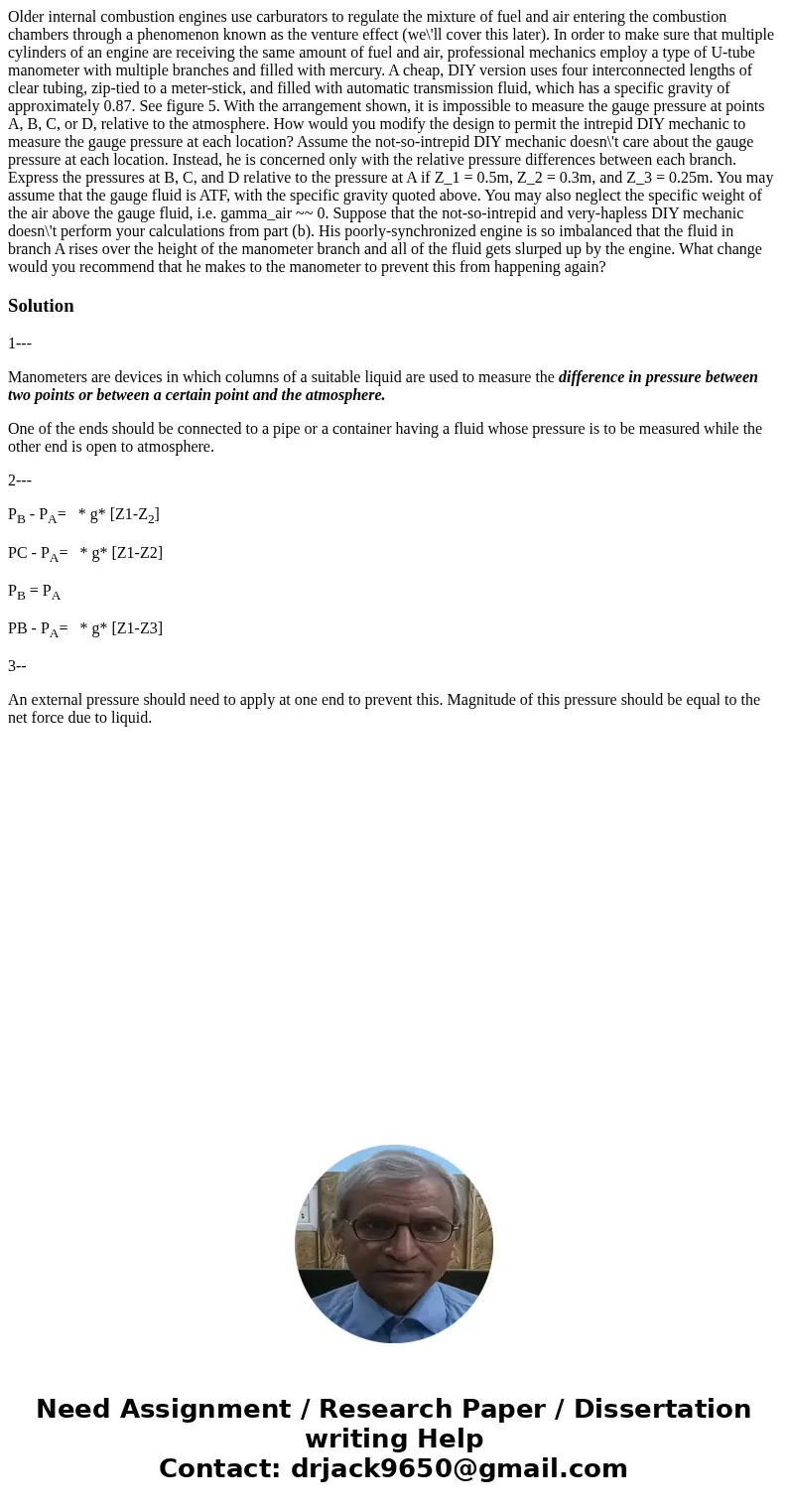Older internal combustion engines use carburators to regulat
Older internal combustion engines use carburators to regulate the mixture of fuel and air entering the combustion chambers through a phenomenon known as the venture effect (we\'ll cover this later). In order to make sure that multiple cylinders of an engine are receiving the same amount of fuel and air, professional mechanics employ a type of U-tube manometer with multiple branches and filled with mercury. A cheap, DIY version uses four interconnected lengths of clear tubing, zip-tied to a meter-stick, and filled with automatic transmission fluid, which has a specific gravity of approximately 0.87. See figure 5. With the arrangement shown, it is impossible to measure the gauge pressure at points A, B, C, or D, relative to the atmosphere. How would you modify the design to permit the intrepid DIY mechanic to measure the gauge pressure at each location? Assume the not-so-intrepid DIY mechanic doesn\'t care about the gauge pressure at each location. Instead, he is concerned only with the relative pressure differences between each branch. Express the pressures at B, C, and D relative to the pressure at A if Z_1 = 0.5m, Z_2 = 0.3m, and Z_3 = 0.25m. You may assume that the gauge fluid is ATF, with the specific gravity quoted above. You may also neglect the specific weight of the air above the gauge fluid, i.e. gamma_air ~~ 0. Suppose that the not-so-intrepid and very-hapless DIY mechanic doesn\'t perform your calculations from part (b). His poorly-synchronized engine is so imbalanced that the fluid in branch A rises over the height of the manometer branch and all of the fluid gets slurped up by the engine. What change would you recommend that he makes to the manometer to prevent this from happening again?
Solution
1---
Manometers are devices in which columns of a suitable liquid are used to measure the difference in pressure between two points or between a certain point and the atmosphere.
One of the ends should be connected to a pipe or a container having a fluid whose pressure is to be measured while the other end is open to atmosphere.
2---
PB - PA= * g* [Z1-Z2]
PC - PA= * g* [Z1-Z2]
PB = PA
PB - PA= * g* [Z1-Z3]
3--
An external pressure should need to apply at one end to prevent this. Magnitude of this pressure should be equal to the net force due to liquid.

 Homework Sourse
Homework Sourse